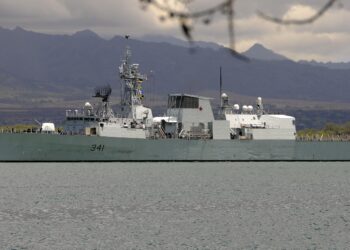AGENCE FRANCE-PRESSE,
BEIJING: The commander of US forces in the Pacific is in China for a seven-day visit aimed at improving military ties between the two countries, the US embassy here said Wednesday.
Admiral William Fallon, who arrived on Tuesday, will meet with Chinese military officials in Beijing before visiting the northern city of Xian, eastern Hangzhou and Shenyang in the northeast, a US embassy spokeswoman said.
“This is a follow-on to continue with improved military-to-military relations,” the spokeswoman told AFP.
Fallon will meet with provincial and defense officials during his tour, before leaving China on Monday, she said.
In March, Fallon called for increased military engagement with China, despite US concerns over Beijing's continuing increases in military spending.
“The absence of any engagement whatsoever would put us back where we were in the past couple of years where we have virtually gone on a parallel pass with no interaction,” he said.
China announced in March its military budget would increase by 15 percent this year to 35 billion dollars.
Fallon said at the time that US Defense Secretary Donald Rumsfeld had agreed to a significant increase in US-Chinese military interchanges this year.
But the interaction comes as the United States has also shown increasing signs of concern about China's military build-up.
The United States is shifting its military might to the Asia-Pacific region and equipping its forces for high-tech warfare as a hedge against China's military buildup, the Pentagon said last month.
“It is US policy to encourage China to emerge as a responsible international partner,” Pentagon spokesman Bryan Whitman said.
“However, there is also a lack of transparency and some uncertainty surrounding China's future path. Therefore, we and others have to naturally hedge against the unknown.”
The United States has been modernizing and reorienting its military forces in recent years, shifting its weight from Europe to the Asia-Pacific region and south Asia.
It has revamped its military alliance with Japan, and moved to strengthen military ties with India and countries in southeast and central Asia.









